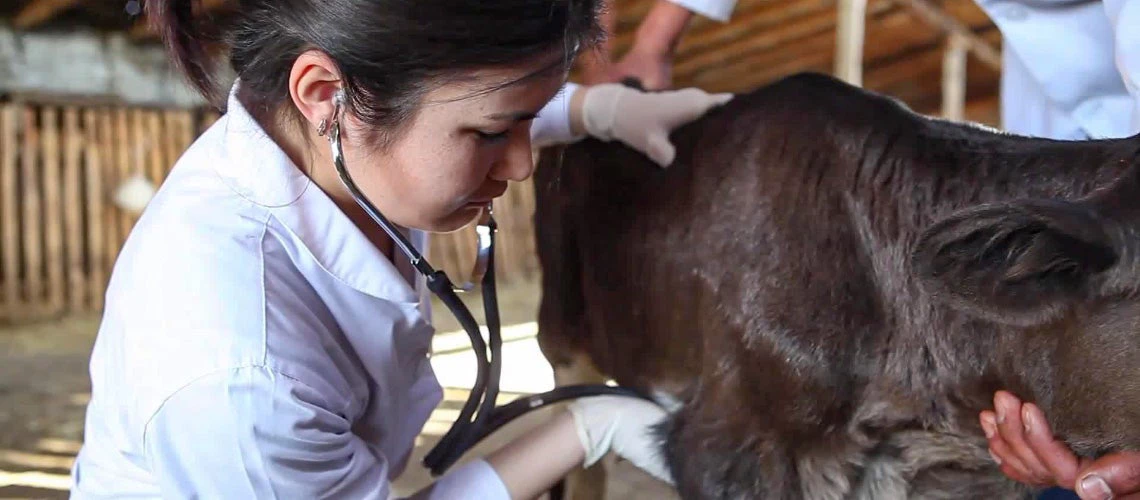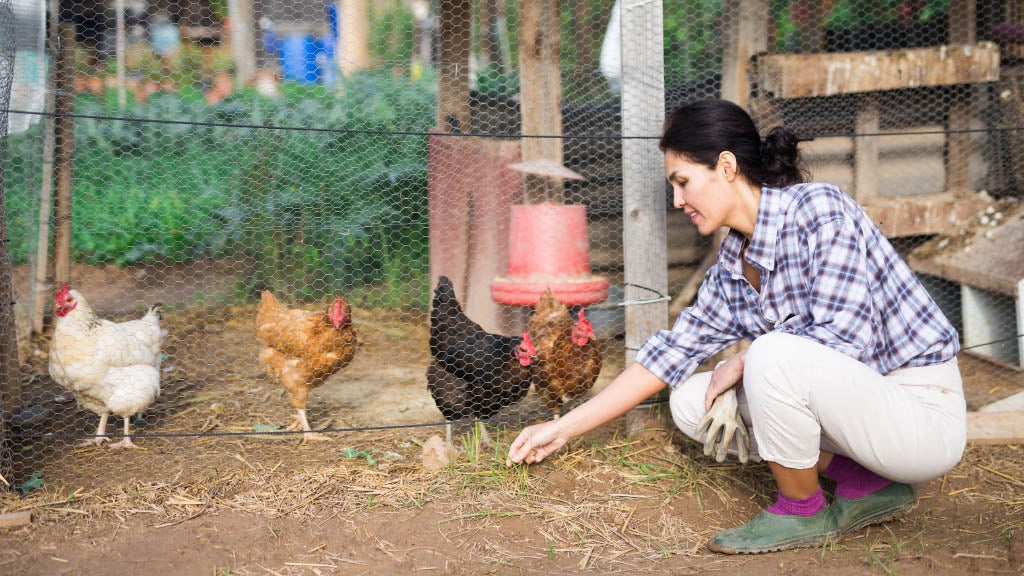 Preventive veterinary examination of calves, Kyrgyz Republic
Preventive veterinary examination of calves, Kyrgyz Republic
Central Asian countries are joining forces across the environment, agriculture, and health sectors to protect food systems and prevent future pandemics
The massive emotional, physical, and socio-economic burden of the COVID-19 pandemic still weighs heavily on the world. Yet, as the pace of emerging infectious disease outbreaks continues to accelerate, the next pandemic may be closer than we think.
Human activity is the main driving force behind new, emerging, and re-emerging diseases. Most pathogens that are infectious to humans cross over from animals to people. The World Organisation for Animal Health estimates that about 75% of all human emerging infectious diseases have an animal origin. Their emergence is linked to our interference in animals’ natural habitats, farming practices that harm water resources and biodiversity, and the intensive farming of a few domesticated animal breeds.
Climate change will only exacerbate these risks. Today, many countries rely on short-term solutions that involve the use of antimicrobials – medicines such as antibiotics, antivirals, and antifungals – to prevent and combat infectious diseases, preserve food, and promote animal growth. But this leads to one of the world’s top global public health threats facing humanity—antimicrobial resistance, where bacteria, viruses, and parasites adapt and no longer respond to medicines.
This is why prevention, rather than cure, needs to be the global focus for emerging infectious diseases. In Central Asia, countries are coming together to put this approach into practice.
Central Asia presents a unique opportunity
Central Asia is particularly vulnerable to emerging infectious disease outbreaks as it is located at an intersection of global value chains with countries that rely heavily on labor migration. Across the region, animal diseases, such as brucellosis, anthrax, and Lumpy Skin Disease – combined with relatively poor animal husbandry practices and genetics – have a detrimental impact on productivity, regional food supply, and agricultural competitiveness.
However, it has, together with the broader region, a unique advantage to prevent and tackle future disease outbreaks due to the shared epidemiological past of the countries of the former Soviet Union, which once boasted an elaborate network of antiplague centers, research institutes, and laboratories with trained personnel.
Some parts of this legacy remain and were further developed in Central Asian countries, notably with the support of the World Bank, the United Nations Food and Agricultural Organisation, the World Organisation for Animal Health, the United Nations Environment Programme, the World Health Organization, and the Centers for Disease Control and Prevention. As a result, the region already has a strong foundation for implementing One Health – a collaborative approach that brings animal, environmental, and public health sectors together to prevent, detect, respond to, and recover from infectious diseases. Central Asian countries also share animal species, farming systems, movement and trade patterns, and existing mechanisms for cooperation, which will help in developing a coherent regional response.
Regional collaboration is key
This sets the tone for Central Asian countries to work together to proactively prevent emerging infectious disease outbreaks.
With the help of the World Bank, this year Central Asian countries kicked off the development of a One Health Framework for Action that will provide concrete actions and an investment roadmap for the region. The countries in the region share three high-level objectives: pandemic prevention, food system resilience, and trade and competitiveness. They have also reaffirmed the relevance of implementing a regional One Health approach to contribute to reaching these objectives.
Adopting a One Health approach in Central Asia could improve productivity and the trade of animals and animal products, enhance the region’s preparedness and response to disease outbreaks, and generate savings from sharing crucial information on animal and human health.

One Health in action
Around the world, the World Bank is driving a One Health approach to prevent infectious diseases, curb antimicrobial resistance, improve global health security, and achieve development gains. In East Asia, for example, the World Bank's Emerging Infectious Diseases Prevention, Preparedness, and Response Project is working to strengthen national and provincial systems in China to effectively and rapidly detect and prevent the emergence of infectious diseases.
In our 30 years of engagement in Central Asia we have invested hundreds of millions of dollars in all the key sectors needed to make One Health a success. These efforts included strengthening health care systems, surveillance, livestock, agriculture, climate, and environmental protection. Most recently, as part of the Resilient Landscape Restoration Program (RESILAND CA+), the World Bank has been supporting efforts by governments and local communities to restore land, build sustainable ecosystems, and improve food security.
The World Bank is working with the Kyrgyz Republic, Tajikistan, and Uzbekistan to improve their national surveillance systems for infectious disease control. The region is building on the work done through initiatives such as the Integrated Dairy Productivity Improvement Project in the Kyrgyz Republic and the Livestock Sector Development Project in Uzbekistan. These projects help to address weaknesses in public and private veterinary services to improve animal health.
We may be on the precipice of another health pandemic, but the case for prevention is clear and the adoption of One Health is paramount. Central Asia is taking on the challenge and setting an example for other regions and countries to follow.
For more information on One Health, see the World Bank’s recently published report Putting Pandemics Behind Us : Investing in One Health to Reduce Risks of Emerging Infectious Diseases.



Join the Conversation